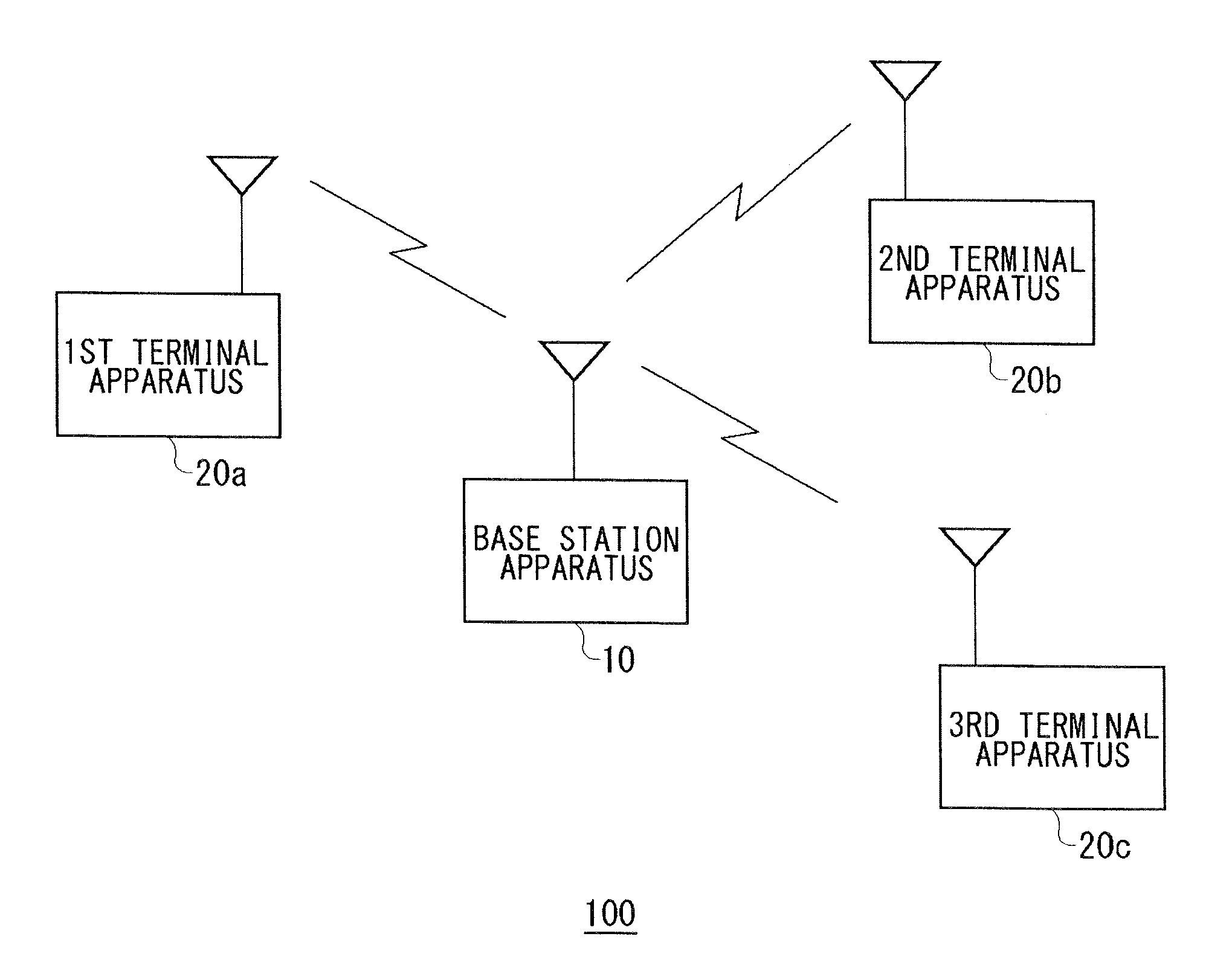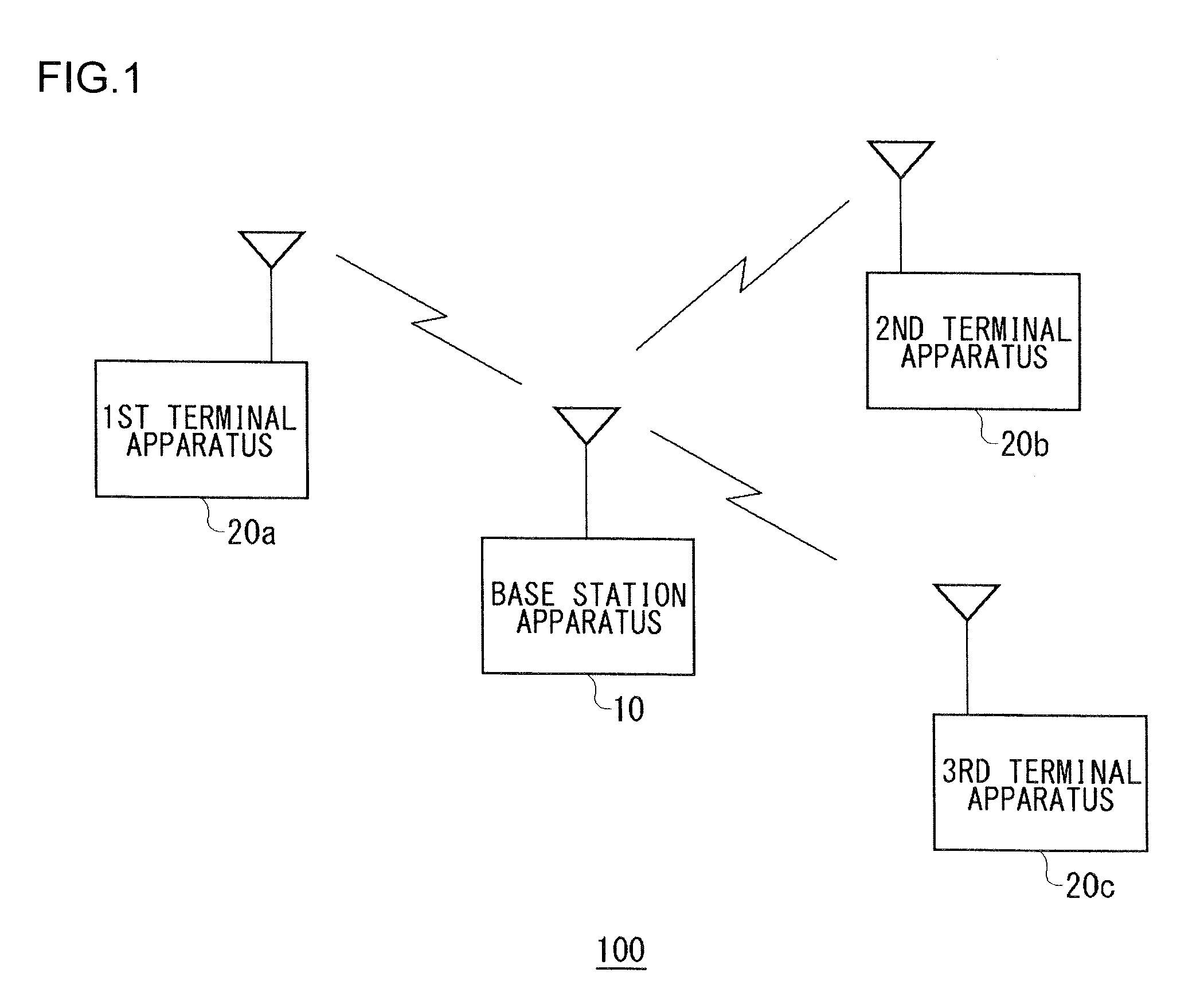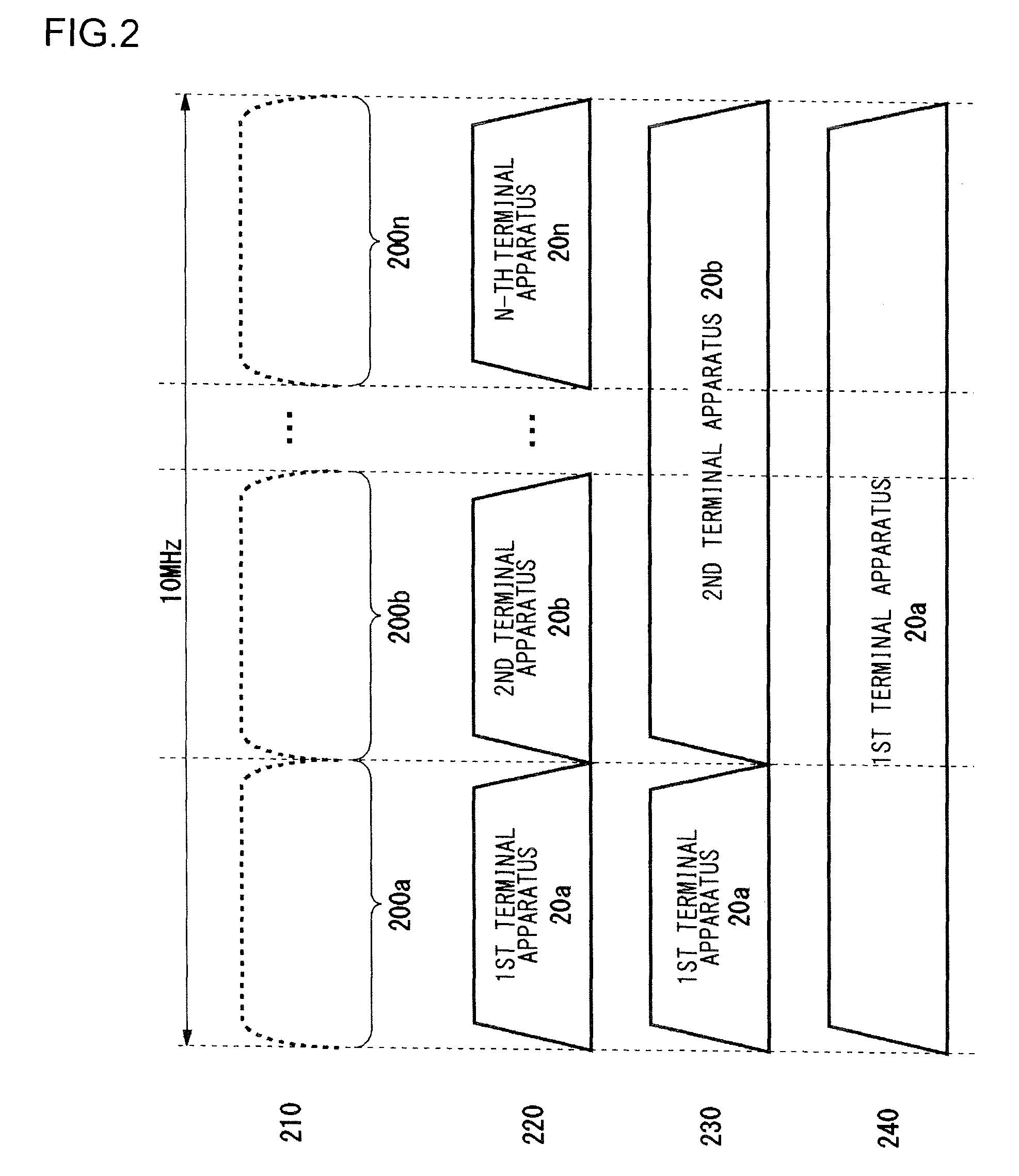Method for allocating radio channels and base station apparatus utilizing the same
a radio channel and base station technology, applied in the field of scheduling technology, can solve problems such as ineffective utilization of resources, and achieve the effect of effective utilization of resources and base station apparatus
- Summary
- Abstract
- Description
- Claims
- Application Information
AI Technical Summary
Benefits of technology
Problems solved by technology
Method used
Image
Examples
example
(4)
[0065]In a case when the required frequency bandwidth in the application requested by the terminal apparatus 20 is “narrow” and the real-timeliness is “low” as with “Web browsing”, allocation can be made to any subcarrier block 200 regardless of both the statistical values and the average values. Accordingly, if there are a plurality of unused subcarrier blocks 200, allocation will be preferentially made to the subcarrier block 200 of the pattern D region 290.
[0066]If there is no subcarrier block 200 of the pattern D region 290 and there is a subcarrier block 200 of the pattern A region 260, the pattern B region 270 or the pattern C region 280 separately or there exist subcarrier blocks 200 of two or more patterns together, the allocation execution unit 48 will allocate the pattern B region 270, the pattern C region 280 and the pattern A region 260 in this order of preference, to the terminal apparatus 20.
[0067]In this manner, in the case when the real-timeliness is low and the r...
PUM
 Login to View More
Login to View More Abstract
Description
Claims
Application Information
 Login to View More
Login to View More - R&D
- Intellectual Property
- Life Sciences
- Materials
- Tech Scout
- Unparalleled Data Quality
- Higher Quality Content
- 60% Fewer Hallucinations
Browse by: Latest US Patents, China's latest patents, Technical Efficacy Thesaurus, Application Domain, Technology Topic, Popular Technical Reports.
© 2025 PatSnap. All rights reserved.Legal|Privacy policy|Modern Slavery Act Transparency Statement|Sitemap|About US| Contact US: help@patsnap.com



